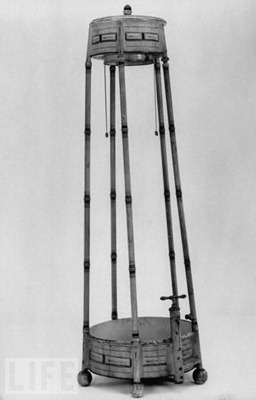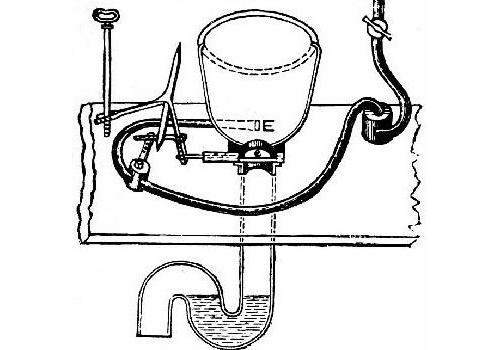The History of Plumbing
Plumbing may sound like just a normal thing today, but back in the bronze ages (3000 - 1200 BCE) it could be something like the railways in 1800s. Plumbing actually meant people could live together in large number without getting ill. In-fact the knowledge of plumbing could have led to the development of very first cities. Let’s find out how it went:
4000 - 3000 BCE: The Harrapan civilization along the Indus and Ghaggar valley is referred by many historians as the birth place of pipes and the sewer system. The most prominent place excavations of these systems have been in ‘Lothal’ — a Harrapan city — in modern day Gujarat, India. Babylonians — modern day Iraq — are the close competitors to Harrapans in case of piping. Terra cotta pipes and wooden mandrels along with T-joints have been excavated from the Tigris-Euphrates valley. Harrapan sewer system was built of cut-out stone and man-made masonry units. Along with this notable observations from the excavation of Harrapan cities were the presence of private bathrooms with slanting tiles to guide sewage with gravity to cesspools. We can call these gravity flushed toilets. The cover image shows the city of Lothal. [2]
]](https://raw.githubusercontent.com/pran-av/pran-av.github.io/master/images/Babylonia_Pipes.gif) Joints excavated in Babylonia
Joints excavated in Babylonia
2500 BCE: Copper drainage system found in the Nile valley of the Egyptians. The Egyptians believed god and humans lived with the same luxuries hence explaining the use of Copper. [3]
1500 BCE: Terra cotta bath tubs and underground channels have been excavated at the Greek islands of Creek and the Minoan civilization. Archeologists have pipes laid at a depth of 11 feet in these excavations. [4]
500 BCE-476 CE: The modern word ‘plumbing’ is derived from the Latin term ‘plumbus’, which means ‘one who works with lead’. Lead was used in Roman drainage system and aqueducts. Talking about Lead, extensive use of it is related to shorter age spans during Roman times. After the fall of Roman empire, sanitation was mostly neglected in the Medieval ages until plagues started ravaging all over Europe. [5]
1596: First actual flushing toilet was built by John Harington, godson of Queen Elizabeth I. It went on to be popular and the invention was known as ‘the John’. [6]
1600s CE: Cast iron pipes were used in France for sewers.
1652: America’s first city-wide water system called ‘Conduit’ was built in the city of Boston to fight fire and for other needs. Hollowed out logs were used. [7]
1664: The first cast Iron water piping system was built by King Louis XIV of France that extended 15 miles from the pumping station to the palace at Versailles. [8]
1767: The first mechanical shower was patented by William Feetham, a manufacturer of stoves and heaters. The system used to collect water in an overhead tank and used to pour it down when a chain was pulled. [9]
 William Feetham’s mechanical shower
William Feetham’s mechanical shower
1775: Alexander Cumming developed John Harington’s design to include the ‘S trap’ which creates a water seal and hence avoids gases from the pipes to enter into the toilet. This was the first modern toilet system. [10]
 ######The S-trap developed by Alexander Cumming
######The S-trap developed by Alexander Cumming
1829: This year marked the first hotel to get a plumbing system. Tremont Hotel of Boston provided indoor plumbing for guests, apart from this the hotel also provided free soaps to their guests to use at their convenience. Probably the start of hotels providing consumer accessories. [11]
1833: White House got its plumbing after a hotel! Next year saw a bathing room installed. Plumbing took 20 years more to reach the 2nd floor of the White House. [12]
1857: The first toilet papers were commercially sold by Joseph Gayetty, he was so proud that he had his name printed on it. It was a great invention indeed, given how the first things to get out of stock when something happens is the toilet paper. [13]
1860s-1890s: Paris was one of the first city to build underground sewers (400kms - they also built sidewalks to clean). Rest of Europe after plaques followed.
1870s: British pottery manufacturer Thomas William Twyford invented the single-piece ceramic toilet. Shortly after water heaters became common as well. [14]
1950s: Polyvinyl Chloride (PVC) began to be used widely in plumbing due to its lower costs. [15]
This is pretty much it, perhaps the longest stretched history of any invention i.e. 3000 BCE to 1950s. Though I didn’t mention most of the water and hygiene laws, most of them were created in late 1800s or in 1900s. One very important thing to note is that history isn’t chronological as we appear when we write it this way in an article. Sometimes, inventions happen simultaneously around the world and we don’t know. Anyway, the key takeaway from this is that plumbing has always been crucial and the reason of humans being able to live in cities. We ignored it and lost interest in the Medieval period and came to senses only after many plagues.
